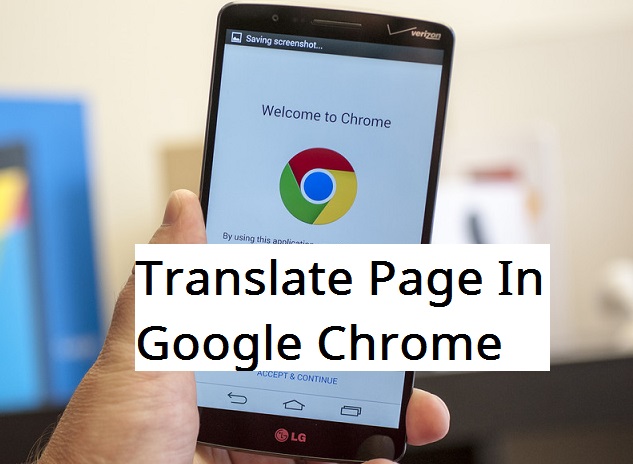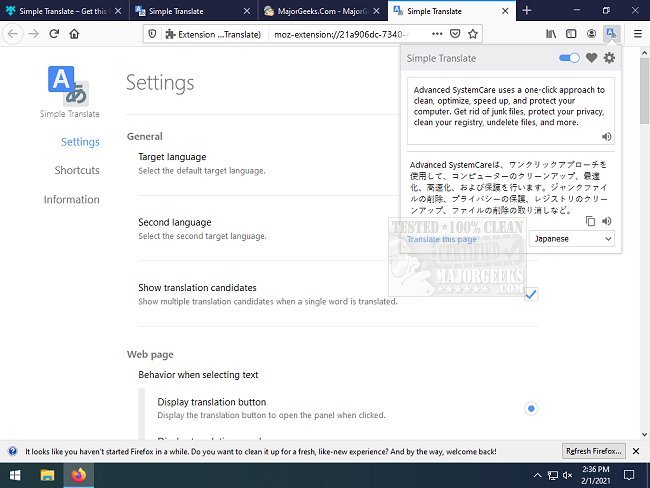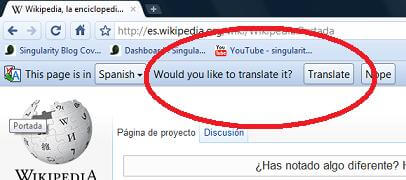

The "message" specifies the value of the string in this locale.
#Translate tab chrome android#
Checkout the Android Custom Tab Sample app on Github for a working example. Open the app/adle file and add the browser library to the dependencies section. The name is a key such as "extName" or "search_string" that identifies the string. The first step for a Custom Tabs integration is adding the AndroidX Browser Library to your project. The extension also automatically detects if the language of a page you're on is different from the language. In messages.json, each user-visible string has a name, a "message" item, and an optional "description" item. Click the translate icon whenever you want to translate the page you're visiting.
#Translate tab chrome full#
See the Predefined messages section for a full list of predefined message names. Some messages, such as and are provided by the internationalization system. In each call to getMessage(), you can supply up to 9 strings to be included in the message.
#Translate tab chrome download#
Enable the Chrome Flag 'Desktop Partial Translate' to get the features of this extension in the actual Chrome UI instead of having to download this. In your extension or app's JavaScript code, refer to a string named messagename like this: chrome. The browser translation tool helps users. Open a file from your computer in Google Chrome, Press + O, then select a. Just remember that you will have to sign in to websites all over again once youve done that. In manifest.json and CSS files, refer to a string named messagename like this: _MSG_messagename_ Open a new window in incognito mode, + Shift + N. Upon loading the page, the translation bar will appear at the. If you use an unsupported locale, Google Chrome ignores it. Navigate to the page with the language you want Chrome to automatically translate in the future.

You can use any of the supported locales. Open Google Chrome on your phone, and go to any website youd like to translate. Please know that DOMAIN SETTINGS OVERWRITE ANY WEBPAGE TRANSLATION SETTINGS.įor more information, please refer to the User's Guide.Important: If an extension has a _locales directory, the manifest must define "default_locale". If you want to disable this feature, clear the checkbox next to "Show original on mouseover".

The toolbar will be replaced with the "Show" toolbar icon in the right upper corner, which will open the translation toolbar upon clicking on it.īy default, when you hover your mouse over the translation, you will see the original text. If you want to hide the translation toolbar for this specific website (domain, subdomain), clear its checkbox. on the left pane, switch to the languages tab. As a result, this specific website (domain) will never be translated.ĭuring the translation, the translation Toolbar appears on the top of the translated webpage. on your first time visiting the website translator, you see a page asking you to add your website. Designed for Android, Chrome brings you personalized news articles, quick links to your. If, for some reason, you want to disable the translation of some website (domain), choose "None" in the "Translate to" drop-down list. Google Chrome is a fast, easy to use, and secure web browser. In the "Translate to" drop-down list of languages choose "All" to apply the same domain's translation parameters and settings to any language. NOTE THAT ALL WEBPAGE TRANSLATION TOOLBAR SETTINGS OVERWRITE GENERAL WEBPAGE TRANSLATION OPTIONS.

set Webpage Translation on the ImTranslator button on the toolbar to run the translation with one button click.choose “Translate this page to” a preferred language from the context menu ImTranslator: Translation, Dictionary, TTS.To set up an automatic website translation, first translate your preferred website to a selected language by using one of the following ways: This feature is currently available for ImTranslator for Chrome, Opera, Yandex. The new Webpage Translation module allows you to set up an automatic website translation.


 0 kommentar(er)
0 kommentar(er)
